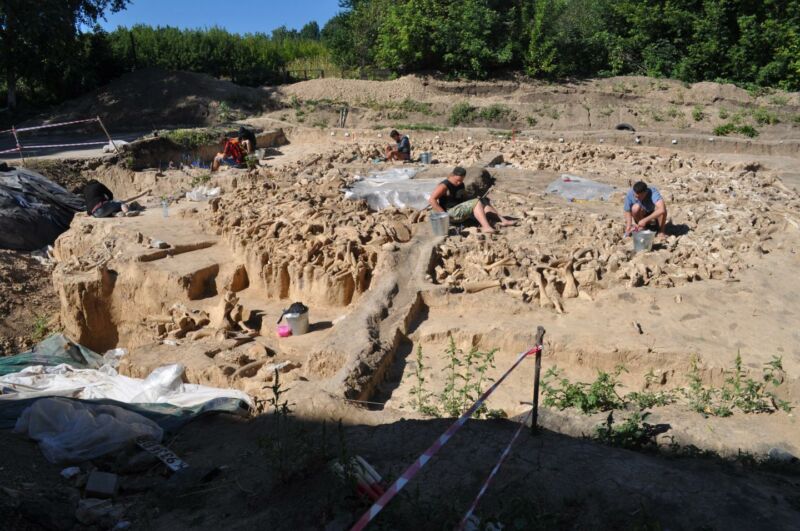People built bone circles at the edge of ice sheets, and we don’t know why

Enlarge (credit: Alexander Pryor)
As the last Ice Age tightened its hold on Europe, a group of people living near the Don River piled dozens of mammoth bones into a 12.5m (30ft) wide circle. They may have lived in the shelter of the mammoth bones for a while, huddling around fragrant fires of conifer wood and mammoth bone and making stone tools. But the traces they left are so light that it seems they didn't stay long-or maybe they only visited occasionally.
A truly mammoth structureArchaeologists found the bone circle in 2015. It's one of about 70 mammoth-bone circles scattered around eastern Europe and western Russia, and it's one of three within a few hundred square meters of each other near the modern village of Kostenki, about 500km (310 miles) south of Moscow. Excavations unearthed the first bone circle at Kostenki during the 1960s. A second structure nearby now lies buried under construction on private land. The third bone circle at Kostenki, discovered in 2015, is the largest and the oldest structure of the sort ever found.
Fragments of charcoal from inside the circle, along with samples of mammoth bone and ivory, radiocarbon-dated to around 20,000 years ago, during the coldest stage of the Last Glacial Maximum. Ice sheets several kilometers thick stretched southward across most of northern and western Europe. But people somehow made a living on the cold, inhospitable steppes just southeast of the glaciers. They also built huge circles out of mammoth bones-archaeologists just aren't sure why.
Read 12 remaining paragraphs | Comments